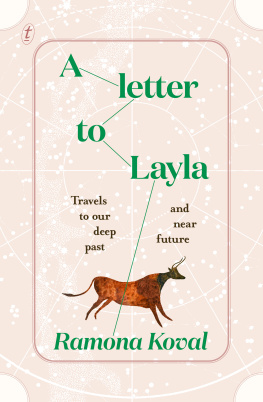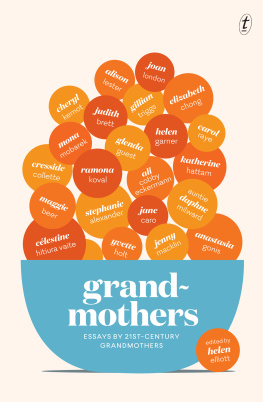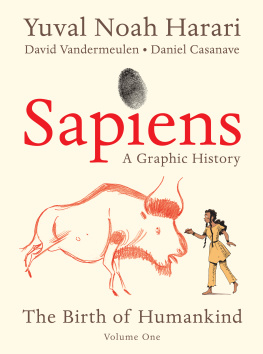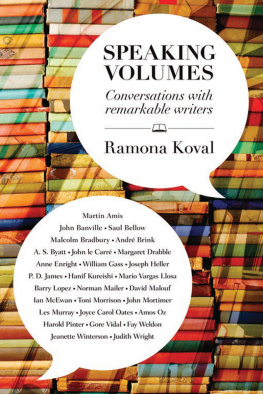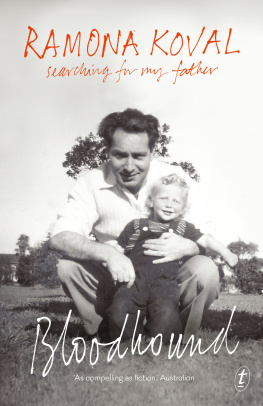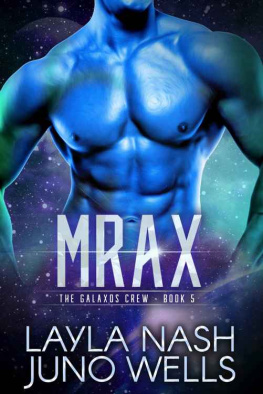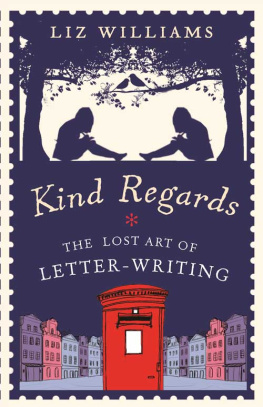How might the origins of our species inform the way we think about our planet? At a point of unparalleled crisis, can human ingenuity save us from ourselves?
Much-loved writer Ramona Koval travels the globe in a quest for answers, and encounters the unexpected. She talks to an eminent paleo-archaeologist over a two-million-year-old skull in the Republic of Georgia, meets the next generation of robots in Berlin, attends a festival against death in California and explores an ice-age cave in southern France, speaking with the worlds leading authority on cave art.
Between these and other adventures she returns to her ever-engaging granddaughter Layla, whose development in infancy spurs Koval to find out what makes us human, what separates us from the other apes.
Full of revealing exchanges with scientists and writers whose knowledge of the past and visions for the future could hold the key to our next evolution, A Letter to Layla will surprise and delight in equal measure.
For my grandchildren,
and all the other futurenauts,
with love
I am small because I am a child and you are big because you are an adult. Thats how nature works.
my granddaughter Layla, aged three and a half
I used to think nature was predictable. Red in tooth and claw, yesbut if teeth and claws were kept at bay, I reasoned, the odds of my coming to harm were negligible. My anxieties were essentially personal: my family, health, writing. I assumed that nature would take care of itself.
Until a few years ago, when I realised I no longer needed my cosy winter coat. As a child, I had loved the wintry crunch underfoot of frosted grass on the way to school. I knew the urgent feeling of plunging into bed to warm up the cold sheets with my body. Back then Australia measured temperature with the Fahrenheit scale and only the occasional summers day went over the century, hot enough to warrant a bold headline in the morning newspapers. Today a temperature of 40 C (104 F) is routine in a Melbourne summer.
A few years ago our first-floor apartment was almost flooded, in a one-in-a-hundred-year rainfall event. The downpour was filling the back balcony faster than it could drain away. We bailed water furiously over the balustrade for more than an hour. The following week we arranged for a plumber to drill a second overflow drain hole for next time, which I now understand will occur well before another hundred years have passed.
When I walk by the bay where I have lived for most of my life I see public notices announcing the building of a higher sea wall to protect against predicted future flooding. I indulge my class resentment and imagine which fancy beachfront mansions are destined to sink under water, and congratulate myself for buying an upstairs flat at the top of a hill.
I read reports of the subtle changes among certain species of frog whose mating seasons are triggered by temperature and rainfall. Some are now breeding six weeks earlier than they did forty years ago: this merging and overlapping of breeding seasons means new competition between species for resources and consequent threats to their survival. Previously I had never paid much attention to frogs.
Over the past sixty-five million years climate changes crept up imperceptibly; millions of years might go by while some species happily persisted and others faded into extinction. But since humans started burning oil, coal and gas, the greenhouse-gas levels in the atmosphere have increased ten times faster than in any previous era. Most of the heat generated by this greenhouse effect is being stored in our oceans. As they have become hotter their volume has expanded, pushing up sea levels; the stored heat has, among other things, fuelled the intensity of hurricanes.
At my desk I watch YouTube videos of permafrost melting in Canadas Arctic and forlorn polar bears losing opportunities to kill seals due to the Arctic sea ice retreating more each season. I try thinking about this from the seals point of view (Seals 1, Polar Bears 0), but then remind myself of their respective places on the food chain: thats how nature works. When I wake and hear morning birdsong outside my bedroom window I feel relieved. I wonder if Im hearing fewer birds than I did when I was a child, and imagine what it might be like to wake and hear none.

I have always been, on balance, an optimist. Realism is vital but it needs to be tempered in order to create the possibility for action. Charles Darwin knew not to allow himself to drown in misery. Plagued by digestive upsets and spending his time pondering doomed species, he enjoyed hearing his wife read him novels twice a day to help him relax, a wonderful relief and pleasure: but only those books that do not end unhappilyagainst which a law ought to be passed.
There may not be enough novels with happy endings to assuage my fears about the future. Thankfully, optimistic geo-engineers have already thought about what we might do if there is insufficient global political will to prevent catastrophic further rises in the earths temperature. They suggest injecting dust into the stratosphere (as a volcano does) to reflect solar radiation, or adding iron to the oceans to stimulate algal blooms to capture and store carbon dioxide. Others enthuse about living above the warming earth in vast rotating habitats or even flying away to somewhere else in the solar system.
Theres much about human ingenuity to excite us. One day I heard the first recording of the Martian wind. Another day I saw an electron-microscope image of diatoms, the single-celled plants that produce twenty per cent of the worlds oxygen and look like they have been designed with precision engineering. And last summer, from that once water-deluged back balcony, I saw five flightless mammals jump out of an aircraft for fun, falling until their parachutes opened in time to for them to glide safely to a stop on the foreshore.
I scan daily reports from scientific journals and read of ever more mind-boggling human innovations: bacteria that produce electricity, nanoparticles that precisely deliver drugs to target cells, materials that miraculously rebound to their previous form after being crushed. Genetic engineers will change our genomes to remove bad genes and introduce good ones, as they have already done with plants to create abundant food, and we will engineer ourselves out of whatever environmental pitfalls await us. Or, at least, that is the hope.
Thanks to machine intelligence, not only do we communicate by computer with others all over the world working on the same problems but also our machines can communicate between themselves, building on what we know. I watch video animations of space elevators and skyhooks, which promise to lift people and cargo more easily into orbit, and wonder if these predictions will come to pass, if the abilities of engineers will match the imaginations of science-fiction writers.
We have never before been so dominant over the earth and had such a profound understanding of the world around us. And yet we find ourselves in a very vulnerable position. Humans can be courageous and clever, curious and adaptable. We can also be riven by such competitive selfishness that we now endanger not only those in our vicinity (as we always have) but the lives of everyone on the planet.
When I was younger I assumed that those in power who were older than me were also wiser, that I could entrust the ship of state to their steady hands. Now most of the middle-aged adults in charge are my junior, and I am no longer convinced that this is the case. The young people I speak with feel the same way.

